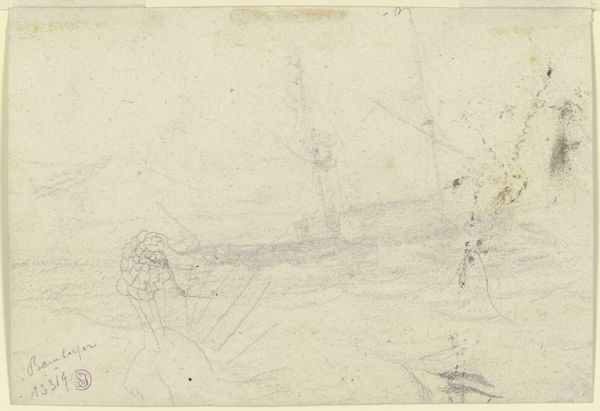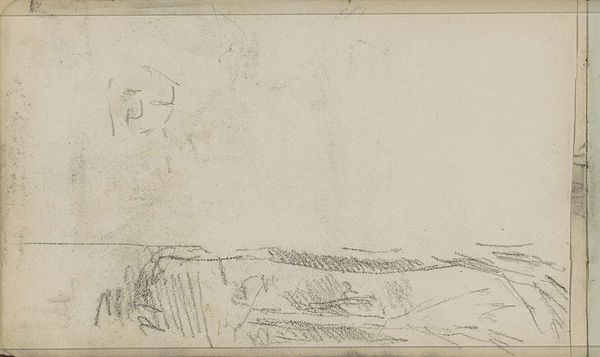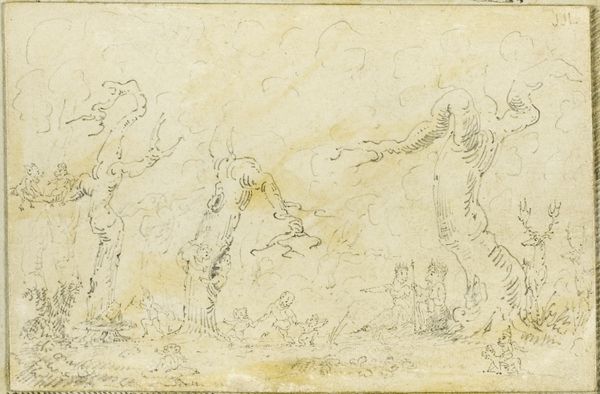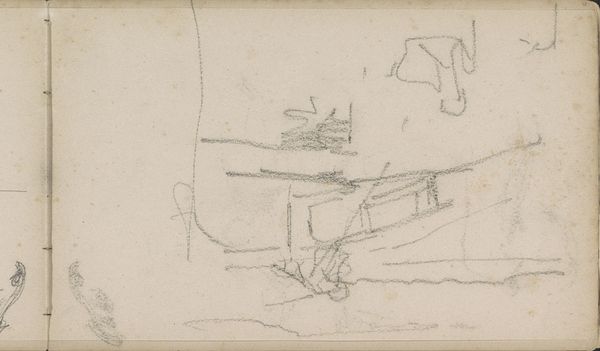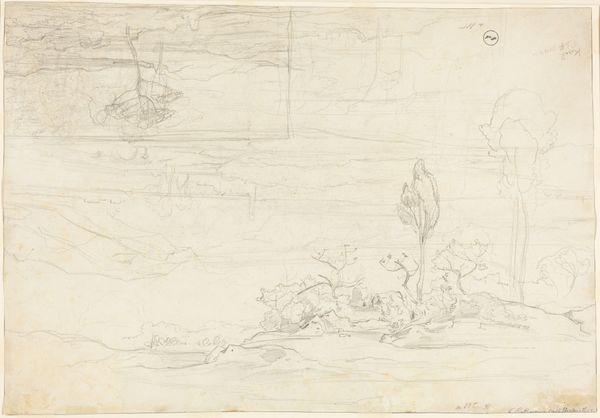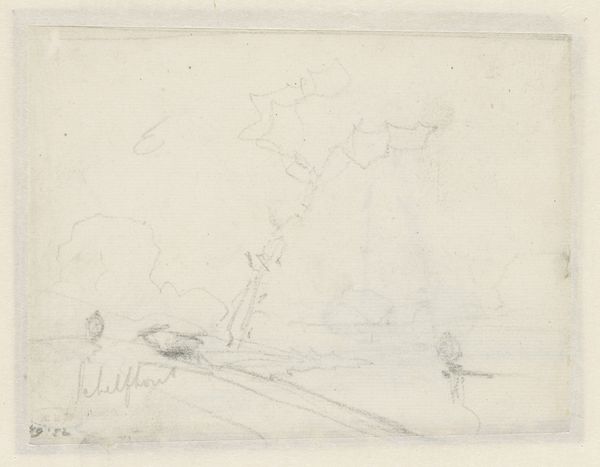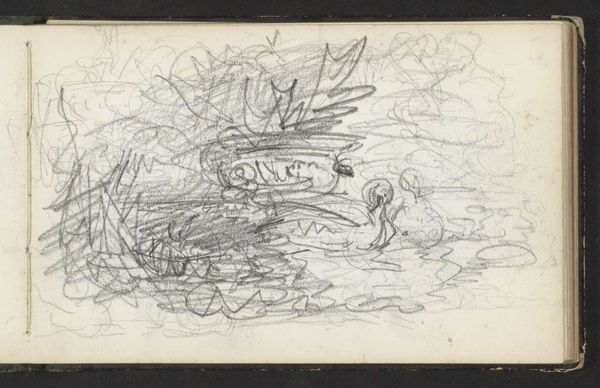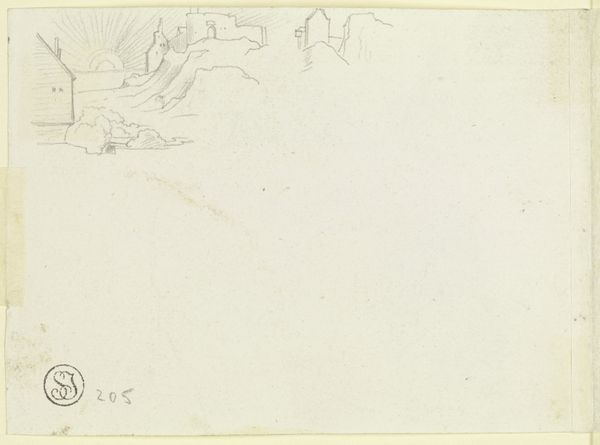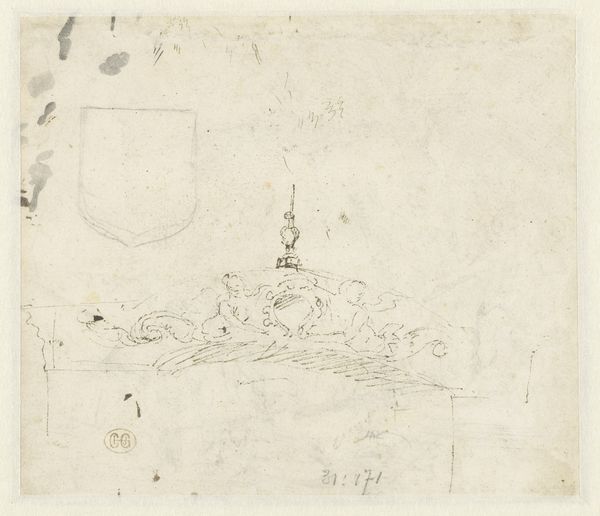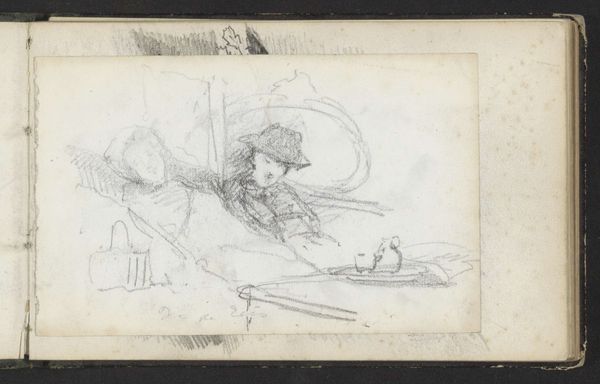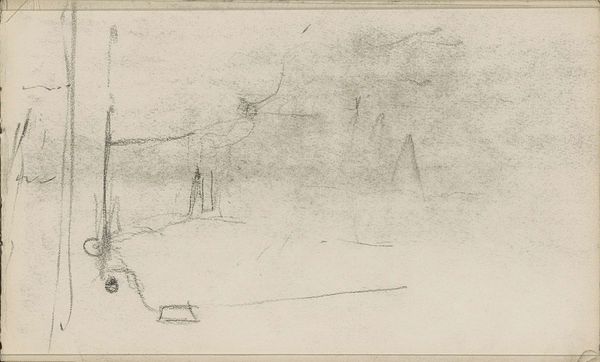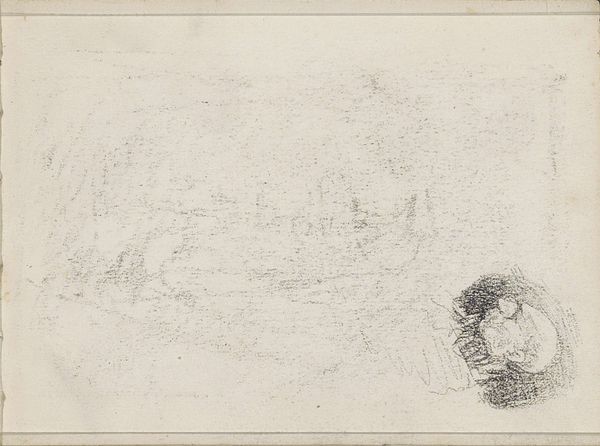
drawing, print, paper, pencil, graphite
#
drawing
# print
#
pencil sketch
#
landscape
#
paper
#
form
#
pencil
#
line
#
graphite
#
realism
Dimensions: 42 × 69 mm
Copyright: Public Domain
Editor: This is John Sell Cotman's pencil drawing, "Moonlight over Landscape." The sketchy quality makes me feel like I'm seeing a memory of a place, not the place itself. What do you see in this piece? Curator: I'm immediately drawn to the stark simplicity. It's a landscape distilled to its essential forms. Notice how the moon, a simple circle, acts as both a celestial body and a symbol? It speaks of cycles, of hidden influences shaping the world below. This recalls the iconography of moonlight representing dreams and madness. Editor: Dreams and madness? How so? Curator: Think of folklore and literature; the moon is often tied to transformation, werewolves, and the shifting boundaries of the subconscious. The scene, barely there in pencil, echoes the fragility of memory itself. This might be a landscape, or a psychological state. Consider its connection to the era's burgeoning interest in the inner self and the sublime's awe and terror. Editor: So, the image acts as a prompt, almost like a Rorschach test, triggering responses from the viewer's own experiences. Curator: Exactly. Cotman uses universal symbols – the moon, the landscape – to tap into something deeply personal within us. He gives only the barest outlines and encourages us to fill in the details from our collective conscious. We find and project meaning. Editor: That's really insightful, I hadn't thought about the viewer's role being so active. I had initially just considered the visible moon as the primary element, but now it’s clearer how it influences all the others. Curator: This work serves as a good example of how symbols and sketches alike are embedded with both subjective experiences and collective cultural memory. We read its story by looking into ourselves, as much as we look upon the art object.
Comments
No comments
Be the first to comment and join the conversation on the ultimate creative platform.
